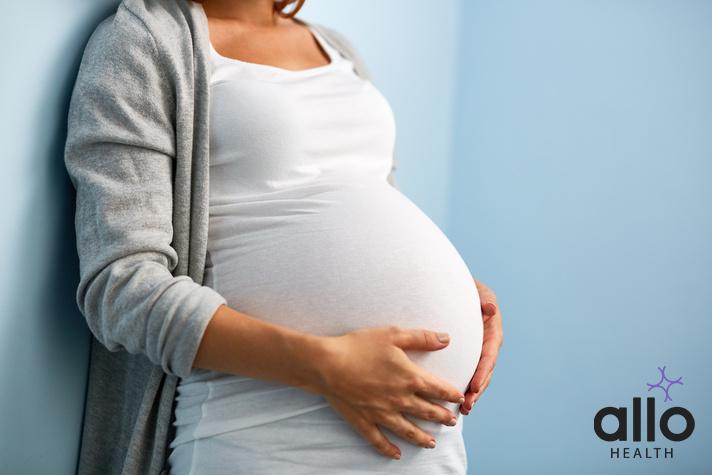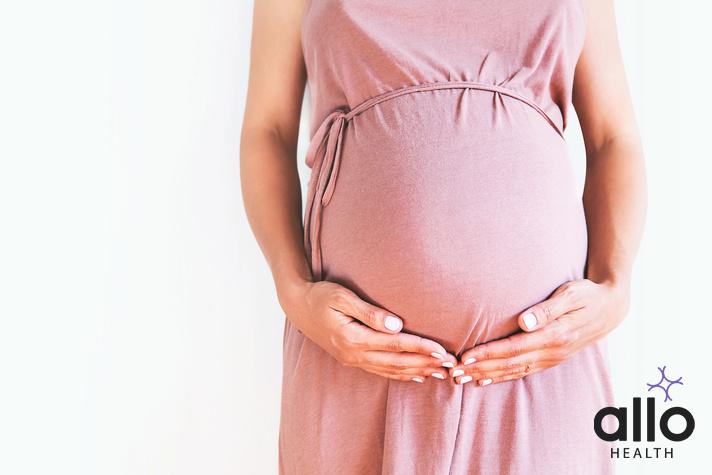Who Kicks More During Pregnancy: Boy or Girl?

"The following blog article provides general information and insights on various topics. However, it is important to note that the information presented is not intended as professional advice in any specific field or area. The content of this blog is for general educational and informational purposes only.
Book consultation
The content should not be interpreted as endorsement, recommendation, or guarantee of any product, service, or information mentioned. Readers are solely responsible for the decisions and actions they take based on the information provided in this blog. It is essential to exercise individual judgment, critical thinking, and personal responsibility when applying or implementing any information or suggestions discussed in the blog."
Pregnancy is a unique journey filled with many questions and curiosities, especially regarding the baby’s movements. A common query is: who kicks more during pregnancy, boy or girl? This article explores this topic, incorporating various aspects such as fetal movement, hormone levels, and gender prediction.
What is Fetal Movement During Pregnancy?
Fetal movements in pregnancy refers to the motions that an unborn baby makes inside the womb. These movements are an essential aspect of pregnancy and are key indicators of the baby’s health and development. Here’s a breakdown of what fetal movement involves:
- Types of Movements: Early in the pregnancy, movements might feel like fluttering or bubbling, often described as “butterflies.” As the baby grows, these movements become more pronounced and can include kicking, stretching, rolling, and even hiccupping.
- Timeline of Fetal Movements: Pregnant women typically start to feel the first movements, known as “quickening,” between 18 to 25 weeks of pregnancy, although this can vary. Women who have been pregnant before might notice movements earlier.
- Progression of Movements: As the pregnancy progresses, the movements tend to become more frequent and stronger. However, towards the very end of the pregnancy, space in the womb becomes tighter, which might result in a change in the nature of the movements.
- Monitoring Movements: Tracking fetal movements is an important part of prenatal care. It helps in assessing the baby’s health. Pregnant women are often advised to be aware of their baby’s movement patterns and to report any significant changes or reductions in movement to their healthcare provider.
- Significance: Regular fetal movement is a good sign that the baby is getting enough oxygen and nutrients through the placenta. It’s also an indicator of the baby’s well-being and normal development.
- Varies for Different Babies: Each pregnancy is unique, and so are the patterns of fetal movements. Different babies move differently, and what is normal for one might not be for another.
Note: It’s always important for pregnant women to stay in regular contact with their healthcare provider to understand and properly monitor their baby’s movements throughout their pregnancy.
Types of Fetal Movement
Fetal movements during pregnancy are an important indicator of the baby’s health and development. As the pregnancy progresses, expectant mothers typically notice a variety of movements. Here are the main types:
- Fluttering or Bubbling: This is often the first type of movement a pregnant woman feels, usually around 18-20 weeks of pregnancy. These initial sensations, known as “quickening,” may feel like gentle flutters or bubbles popping.
- Kicking: As the baby grows, the movements become more pronounced and can be felt as distinct kicks. These kicks tend to increase in strength and frequency as the pregnancy progresses.
- Rolling Movements: Sometimes, the movement feels like the baby is rolling or shifting position. This sensation can become more noticeable as the baby grows larger in the later stages of pregnancy.
- Stretching: As the space in the womb becomes tighter, the baby’s movements may feel like stretching, especially in the final weeks of pregnancy.
- Fetal Hiccups: Fetal hiccups are a type of movement that some pregnant women feel. These are rhythmic, jerking motions that can last for a few minutes.
- Punching or Jabbing: Similar to kicking, but often felt in different areas, these movements can feel like sharp jabs or punches from the baby’s arms or legs.
- Squirming: When the baby is active, you might feel a squirming sensation, which is the baby moving around in the womb.
It’s important for expectant mothers to pay attention to their baby’s movement patterns, as significant changes may need to be discussed with a healthcare provider. Every pregnancy is unique, and the types and frequency of fetal movements can vary widely.
Can We Predict Gender from Baby’s Kicks?

Predicting the gender of an unborn baby based on fetal movements, such as baby kicks, is a topic of interest for many expectant parents. The idea that the strength, frequency, or pattern of fetal kicks can indicate whether the baby is a boy or a girl is a common myth, but it lacks scientific backing.
- Relation of Fetal Movement and Gender Prediction: The notion that the strength, frequency, or nature of fetal movements, including baby kicks, can predict gender is widespread. However, scientific research has not found a reliable link between the characteristics of fetal behaviour and whether the baby is a boy or a girl.
- Girl Babies and Boy Babies Movement Patterns: There’s a common belief that baby girl might kick more or less vigorously than baby boys. But these differences in movement patterns are not scientifically proven to be indicators of gender.
- Fetal Movement Variability: The frequency and strength of fetal kicks generally increase as the weeks of pregnancy progress. However, this increase is part of normal fetal development and is not linked to the baby’s gender.
- Other Factors: Fetal movements can be influenced by the mother’s activity levels, the baby’s position, the amount of amniotic fluid, and other individual health factors.
Note: While it’s a common pregnancy curiosity, the gender of an unborn baby cannot be accurately predicted based on the nature or frequency of fetal kicks or movements. These aspects of pregnancy are more indicative of the baby’s health and well-being rather than its gender.
Common Misconceptions About Boy and Girl Fetus

There are several common misconceptions about girl and boy fetuses that have been perpetuated over time, often based on cultural beliefs or old wives’ tales rather than scientific evidence. Here are some of the most common ones:
- It’s often believed that the gender of the fetus can be determined by the levels of certain hormones in the mother’s body.
Reality: Hormonal levels during pregnancy vary widely among individuals and are influenced by numerous factors. There’s no scientific evidence linking specific hormone levels to the fetus’s gender.
- A common myth suggests that girls have faster heart rates in the womb compared to boys.
Reality: Fetal heart rate varies throughout the pregnancy and is influenced by several factors. Research does not support the idea that heart rate reliably predicts gender.
- It’s often said that carrying high or in a certain shape indicates the gender of the baby.
Reality: The shape of a pregnant woman’s belly is determined by several factors, including the mother’s body type, the baby’s position, and muscle strength. It’s not an indicator of the baby’s gender.
- The Chinese Gender Predictor, an ancient chart that claims to predict gender based on the mother’s age and month of conception, is often cited.
Reality: This method is based on folklore and lacks scientific backing. Its accuracy is considered coincidental rather than factual.
- There’s a belief that craving sweet things indicates a girl, while savory cravings suggest a boy.
Reality: Cravings during pregnancy are influenced more by nutritional needs, hormonal changes, and personal preferences than by the fetus’s gender.
- Severe morning sickness is often thought to indicate a female fetus.
Reality: The severity of morning sickness varies among pregnancies and is not a reliable indicator of the baby’s gender.
- Some believe that a mother’s skin color changes (like glowing or dull skin) can predict the baby’s gender.
Reality: Changes in skin color during pregnancy are due to hormonal changes and vary among women, irrespective of the baby’s gender.
- The myth goes that mood swings or changes in emotional state can indicate whether the baby will be a girl or a boy.
Reality: Mood swings are common in pregnancy due to hormonal changes and stress, and they do not correlate with the fetus’s gender.
Note: It’s important to remember that these methods are largely based on folklore, cultural beliefs, and unproven theories.
Conclusion
While the notion of girl babies kicking more than boy babies during pregnancy is popular, scientific evidence does not definitively support this claim. The pregnancy journey is unique for each pregnant woman, and fetal movements can vary widely, regardless of whether they give birth to boys or girls. It’s essential to focus on the overall health and well-being of both the mother and the unborn baby, rather than on trying to predict gender based on fetal activity levels.
Most Asked Questions
-
Can the frequency of baby kicks predict if I’m having a boy or a girl?
While it’s a common belief that the frequency or strength of baby kicks might indicate whether you’re expecting a boy or a girl, there’s no scientific evidence to support this. Both girl babies and boy babies have their unique patterns of movement. The important thing is to monitor the overall health and activity of your unborn baby, regardless of gender.
-
When should I expect to feel my baby move and how will it change over time?
You can generally expect to start feeling your baby move between 18 to 25 weeks of pregnancy. Initially, these might feel like gentle flutters. As your pregnancy progresses, these movements will become more pronounced and frequent. The nature of these movements may change as the baby grows and has less room to move towards the end of the pregnancy.
-
Do hormone levels in pregnancy affect baby movements?
Hormones, especially those like estrogen, play a crucial role in pregnancy but there’s no clear evidence that they directly affect the baby’s movements. While hormone levels can impact various aspects of pregnancy, the activity levels and movements of the baby are influenced by many factors, including their growth and environment in the womb.
-
Are there any reliable methods to predict my baby’s gender based on their movements?
Methods like the Chinese Gender Predictor or myths about fetal heart rates and movements are popular but they are not scientifically proven. The most reliable way to know your baby’s gender is through medical imaging techniques like ultrasound, usually performed around the mid-point of the pregnancy. Remember, the primary goal is to ensure the health and well-being of both the mother and baby, rather than focusing on gender prediction based on movements.







































